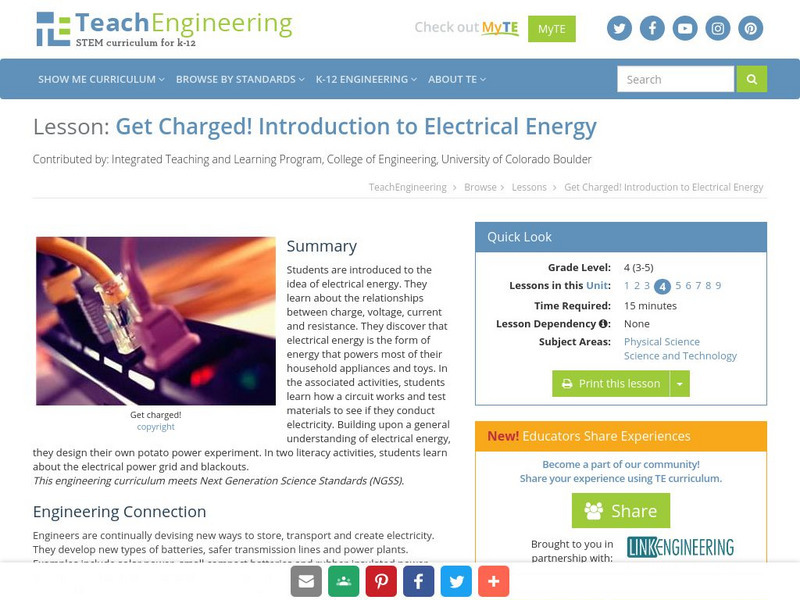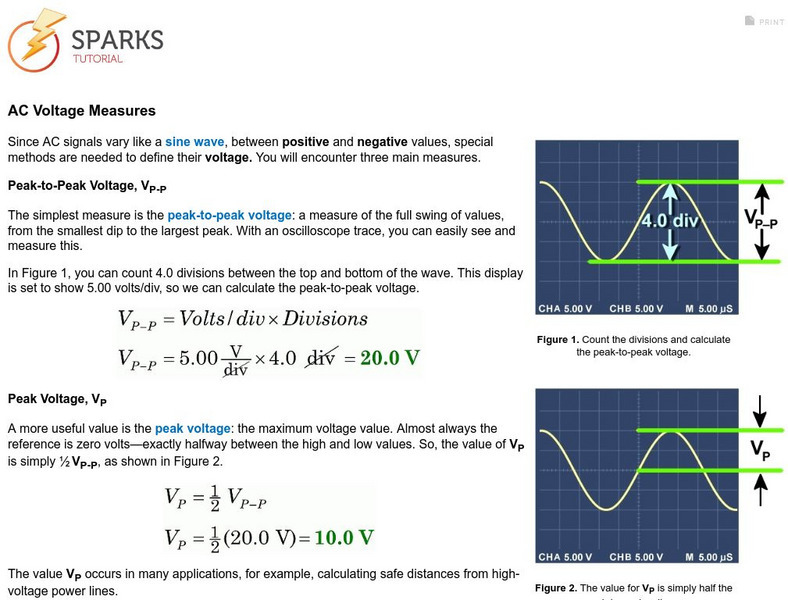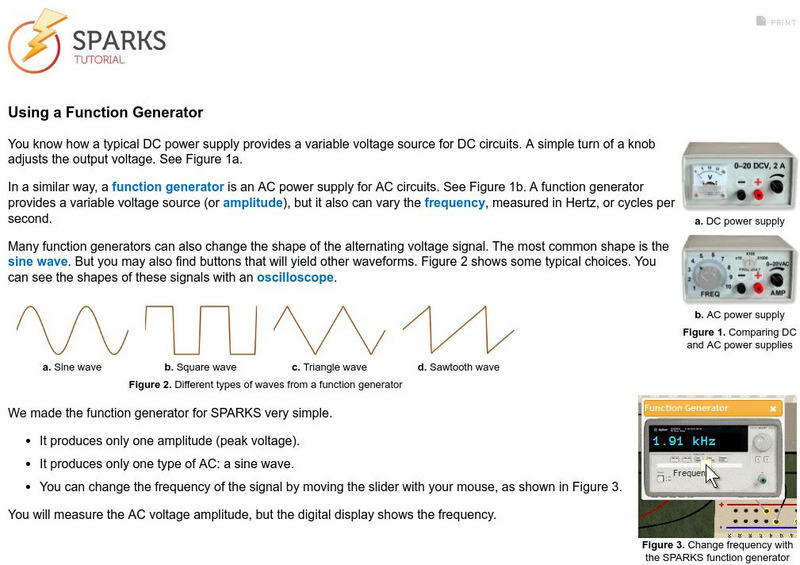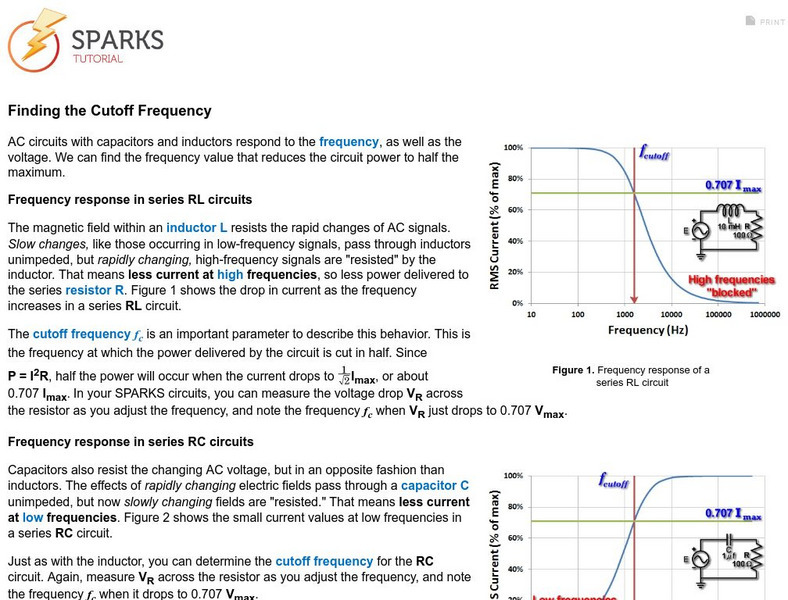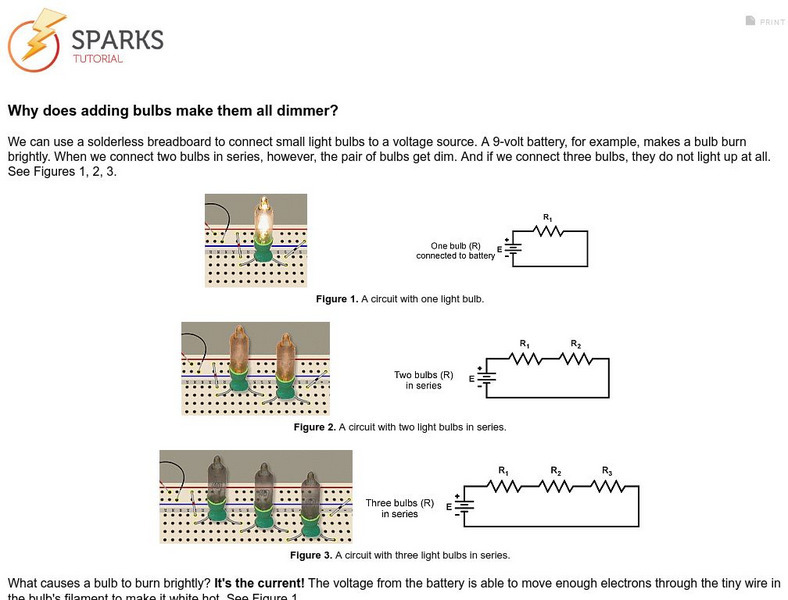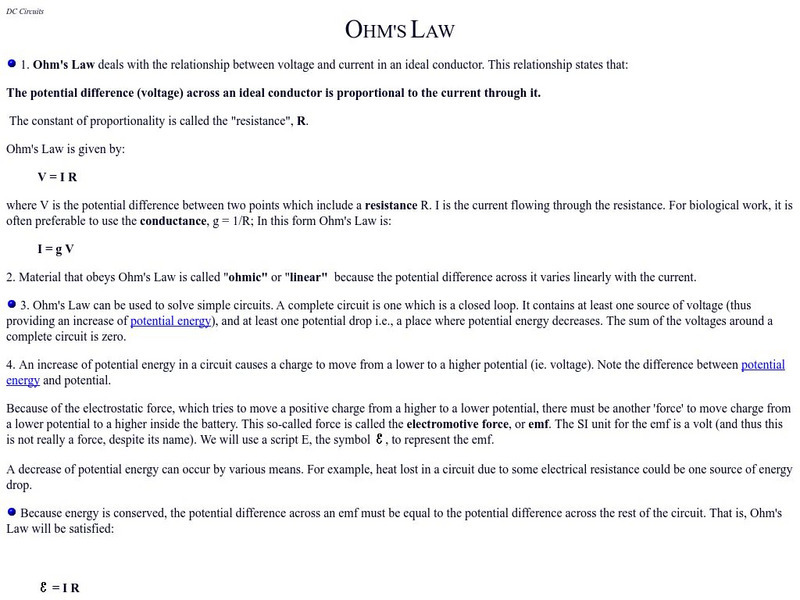Hi, what do you want to do?
Physics Aviary
Physics Aviary: Parallel Circuit Lab
This lab is designed to have students investigate the relationships between voltage, resistance and current in a parallel circuit with up to three passive components. The batteries in this simulation can be varied from ideal batteries to...
Physics Aviary
Physics Aviary: Internal Resistance of Battery
This lab is designed to have students look at the change in the terminal voltage of a battery that occurs as you draw more current from the battery.
TeachEngineering
Teach Engineering: Get Charged!
Students are introduced to the idea of electrical energy. They learn about the relationships between charge, voltage, current and resistance. They discover that electrical energy is the form of energy that powers most of their household...
Physics Classroom
The Physics Classroom: Power: Putting Charges to Work
In this tutorial the concept of how electrical energy is transformed is introduced. Learn how electric charges actually work and take the interactive quiz to assess your understanding.
Concord Consortium
Concord Consortium: Measuring Voltage in Ac Circuits
There are three different measures of AC voltage. Here, consider the peak voltage to measure it.
Concord Consortium
Concord Consortium: Ac Voltage Measures
Discover three main measures of AC voltage.
Concord Consortium
Concord Consortium: Using a Function Generator
See how a typical DC power supply provides a variable voltage source for DC circuits.
Concord Consortium
Concord Consortium: Sparks Tutorial: Using an Oscilloscope
Learn how to use an oscilloscope.
Concord Consortium
Concord Consortium: Sparks Tutorial: Finding the Cutoff Frequency
AC circuits with capacitors and inductors respond to the frequency, as well as the voltage. Find the frequency value that reduces the circuit power to half the maximum.
Concord Consortium
Concord Consortium: Measuring Ac Circuits With a Dmm
Find out how the SPARKS DMM can measure AC voltage and current.
Concord Consortium
Concord Consortium: Dc Circuits: Parallel Resistances (Sparks 2)
Explore circuits with resistors in parallel and answer questions regarding voltage drops across resistors and currents through them in such circuits.
Concord Consortium
Concord Consortium: Dc Circuits: Series Resistances (Sparks 1)
This interactive simulation guides you through the wiring of the standard breadboard and presents you with questions regarding voltage drops and currents in series resistive circuits.
Concord Consortium
Concord Consortium: Why Does Adding Bulbs Make Them All Dimmer?
This tutorial illustrates why adding bulbs to a circuit makes all the bulbs dimmer.
Concord Consortium
Concord Consortium: Dc Circuits: Series Parallel Resistances (Sparks 3)
Answer questions regarding voltage drops across resistors and currents through them in such circuits. Practice calculating the effective resistances of a set of resistances in series and parallel.
University of Guelph
University of Guelph: Physics Tutorials: Ohm's Law
Explains Ohm's Law and some facts related to it.
CK-12 Foundation
Ck 12: Physical Science: Electric Current
[Free Registration/Login may be required to access all resource tools.] Explains what electric current and voltage are and why electric current occurs.
CK-12 Foundation
Ck 12: Parallel Circuits
[Free Registration/Login may be required to access all resource tools.] In this lesson, students learn about parallel circuit design, and how to calculate equivalent resistance from resistors in a parallel circuit.
CK-12 Foundation
Ck 12: Voltage
[Free Registration/Login may be required to access all resource tools.] This lesson looks at what voltage is and how to solve problems involving voltage. Includes a simulation for exploring how charges work in an electric field.
CK-12 Foundation
Ck 12: Fourth Grade Science: Physical Science: Electric Current
[Free Registration/Login may be required to access all resource tools.] Defines electric current and relates electric current to different materials (insulators and conductors).
CK-12 Foundation
Ck 12: Physics Simulation: Electric Analogies
[Free Registration/Login Required] Explore a different way of thinking about electricity as a way to become familiar with the concept of potential, current, and resistance using this interactive simulation. A PDF worksheet and a video...
CK-12 Foundation
Ck 12: Physics Simulation: Dollhouse
[Free Registration/Login Required] Learn about the analysis of parallel circuits in the context of a realistic household circuit using our interactive simulation. A PDF worksheet and a video tutorial are also available. [3:24]
CK-12 Foundation
Ck 12: Physics Simulation: Power Lines
[Free Registration/Login Required] Learn about the relationship between electric potential, current, and resistance in the context of high-voltage AC power lines using this interactive simulation. A PDF worksheet and a video tutorial are...
CK-12 Foundation
Ck 12: Physics Simulation: Flashlight
[Free Registration/Login Required] Learn about electric circuits, the flow of current, electrical resistance, and electrical power dissipation by exploring the operation of a flashlight using this interactive simulation. A PDF worksheet...
CK-12 Foundation
Ck 12: Measuring Current and Voltage
[Free Registration/Login may be required to access all resource tools.] Students are introduced to the ammeter, which measures electrical current, and to the voltmeter, which measures voltage.






